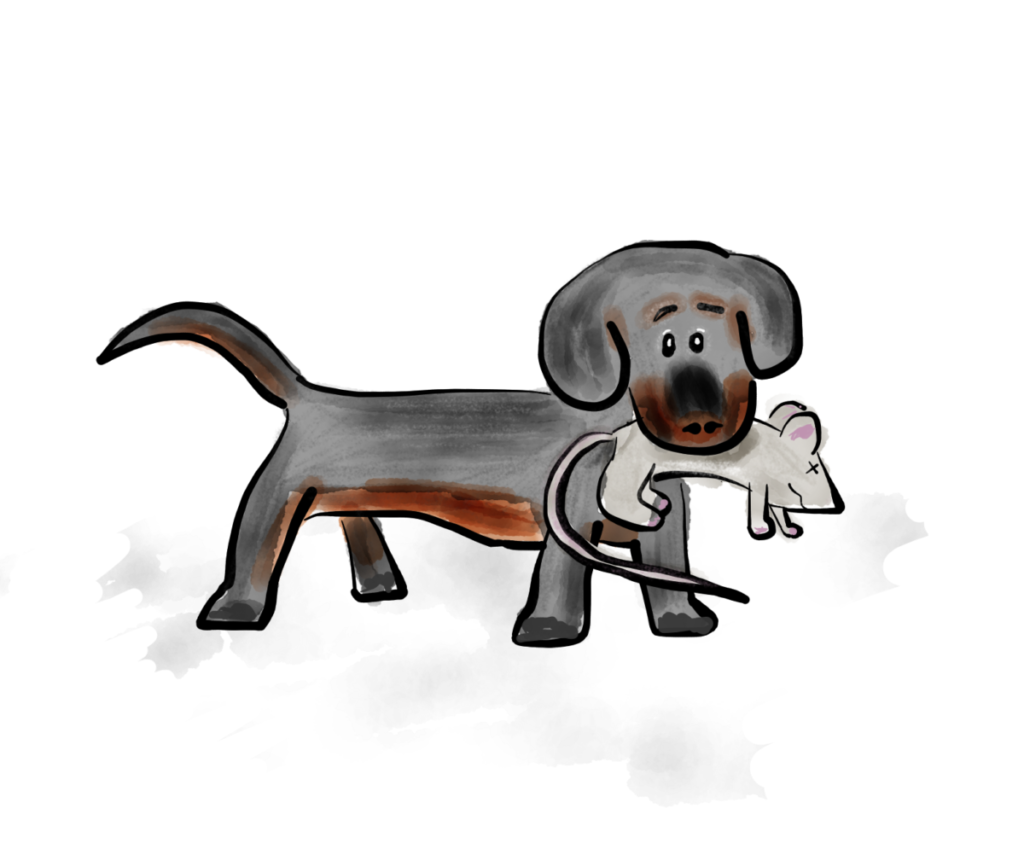I stumbled into a conversation between two developers about getting rid of existing product features, and how to justify their removal to the user base. One of them asked me, “You’re a product manager, how do you take away a feature?” This is a core product management problem.
Decrementing a feature your customers still use can be like taking a dead rat away from a dog. Unless you do it right, they’ll fight, or they’ll run, or you’ll have a mess on your hands.
Here are three strategies for dropping the “dead rats” in your product:
1. Create a better feature that solves the same problem.
A dog might like a dead rat, but not as much as he loves steak. The dog likes the dead rat because it was available. Show it a better alternative and he’ll drop the dead rat without a second thought.
Likewise, a customer’s primary concern isn’t the feature itself. Customers care about solving problems; they care about results. If you take away the user’s ability to get results, they’re going to push back. For example, take the user story that goes: “I want to watch movies in the comfort of my own home.” The statement doesn’t imply the medium in which it’s being watched – it refers to a specific experience. This problem was first solved by VHS, then DVD, and now with digital streaming services. The ability to solve the problem is the essence of the feature, regardless of the mechanics of how to do it.
I, like most people, don’t miss the physical VHS tapes—but I’d fill the room with crane kicks if someone told me I could never watch The Karate Kid again.
Provide solutions in a better format and there’s nothing to fight about.
2. Remove the problem that the feature was built to solve.
Sometimes the reason your dog ends up with a dead rat in its mouth is because your yard is full of junk. Clean up your yard and you’ll have fewer rats for the dog to latch onto.
Many sub-optimal product features exist only to support other sub-optimal features. The road to hell is paved with duct tape and spider-catching flies, especially in an agile software development shop. A two-week “enhancement” is much easier to justify than a complete re-imagining of the way a product component or the entire product works. People might even provide feedback about how the new feature is better (read: less terrible). However, elbow macaroni and glue-on sparkles only go so far.
Pay your tech debt, remove the sources of frustration, or you’ll end up with the fanciest junk yard on the block. A rat wearing a tiny top hat and monocle is adorable, but it’s still a rat.
3. Rip it out
If all else fails, yank the dead rat out of the dog’s mouth. Neither of you will like it, but at least it will be over.
Removing a feature that some of your customer base uses without a better alternative is a brutal endeavor. The hard truth is that sometimes a feature needs to be removed without a great alternative for the user. Maybe the feature doesn’t scale, economically or technologically. Maybe it breaks new business rules or your company wants to pivot the product to a new target audience. Sometimes 90% of users hate the feature and 10% love it.
In any of these scenarios, a subsection of your user base will be unhappy with the loss of a feature, and a subsection of unhappy users will leave. Pick your battles carefully, and when you do, take decisive action. The only thing worse than a dog with a dead rat in its mouth is a dog with half a dead rat in its mouth.
Only hungry dogs need rats; keep them well-fed.
You want to be consistently delighting your customers by creating new and improved features while removing obstacles and frustration. Then, bank credibility for the times you have to make an unpopular choice.







